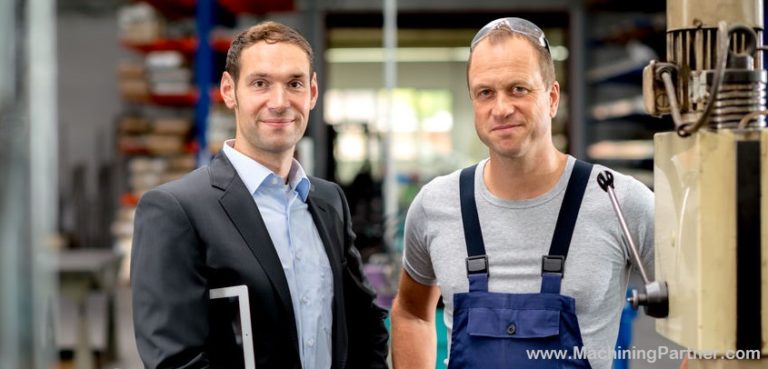Unleashing Productivity: How a Well-Organized Facility Can Help You Overcome Manufacturing Challenges
Disorganization and clutter are rampant in many manufacturing and machining facilities. But chaotic work areas present substantial efficiency and safety issues that hinder performance. Implementing organization principles throughout your shop brings significant benefits.
This article provides an actionable 6-step plan to kickstart your organization journey through sorting, storage, standardizing, cleaning, sustainability, and continuous improvement. Read on to transform your facility.
The Pains and Risks of Disorganization
Disorganized shops deal with frustrations like wasted time searching for misplaced items, cluttered workstations, and tripping hazards from obstructed walkways. These issues chip away at productivity and safety daily.
Ignoring organizational problems poses real risks too – from preventable injuries to employee turnover, missed deadlines that damage customer relationships, and declining performance metrics. Clutter and chaos create distraction, unsafe conditions, and processes riddled with waste.
The Benefits of Improved Organization and Housekeeping
Facilities that implement and sustain organizational systems are able to reap significant benefits:
- Employees complete tasks faster with tools and materials stored intuitively.
- Designated storage and outlined walkways minimize common spill or trip risks.
- Consistent access to tools and paperwork reduces machinist downtime waiting on others.
- Supervisors spend less time tracking down needed job items. Saves management time.
- Organization and visual controls instill a zero-defect mindset on the floor.
6 Steps to Improve Manufacturing Organization
Follow this structured 6-step action plan to drive organization improvements across your facility:
Step 1 – Sort and Purge
The first priority is clearing out unnecessary items. Perform an initial “purge” of your facility:
- Remove any broken, obsolete, or unneeded tools, materials, or equipment. Be ruthless here.
- Designate keep, dispose, or relocate areas like red/green tag zones. This streamlines decision making.
- Group like items together to consolidate storage areas going forward.
- Properly dispose of trash, hazardous materials, recyclables. Don’t let it accumulate.
- You’ve now created space and eliminated distracting clutter.
Step 2 – Establish Organizational Zones
Next, map out dedicated zones for different functions:
- Define areas for incoming/outgoing inventory – centralize these locations.
- Create tool storage zones near relevant workstations for fast access when needed.
- Designate zones for work-in-process staging near appropriate machines.
- Identify areas for outputs like finished parts, quality rejects, or shipments.
- Color code zones with floor tape for quick visual identification. Keeping similar flows together improves efficiency.
Step 3 – Standardize Within Zones
With zones established, standardize the contents:
- Label and visually outline specific storage spots within zones – don’t allow sprawl.
- Use foam cutouts, peg boards, or other organizers to give everything a home.
- Store the most frequently used items closest for quick access when needed.
- Post visual reminders like outlines showing where objects belong when not in use.
- Standardization reduces time spent searching and ensures a consistent workspace.
Step 4 – Clean and Inspect
Perform thorough cleaning of the entire facility:
- Clear floors of loose tools, debris, cables, or hazards.
- Remove leaks, spills, and excess lubricants/coolants around machines.
- Eliminate accumulated dust, metal chips or shavings near equipment.
- Clean windows, workbenches, shelves, containers storing materials.
- Inspect clean areas for any new clutter or damage. Fix sources rather than symptoms.
- Daily cleanliness must become a habit – empower teams to take ownership of their spaces.
Step 5 – Sustain Organization
Don’t let improvements reverse over time. Implement mechanisms to sustain organization:
- Conduct 5S audits of zones frequently as part of Gemba walks. Engage teams.
- Recognize and celebrate small wins like reclaimed workspace or days without accidents.
- Review procedures with new hires extensively during on-boarding. Make expectations clear.
- Continuously refine storage methods and zones based on feedback from machinists.
- Empower employees to identify and resolve clutter issues causing obstacles.
- Reinforcing organization through both bottom-up and top-down approaches keeps progress on track.
Step 6 – Drive Further Enhancements
Once a solid organizational foundation is in place, look for additional areas to optimize:
- Use visual controls like magnetic status boards to provide information at a glance.
- Paint lines or post reminders demarcating walk paths vs. work areas.
- Assess inventory levels and configurations to right-size amounts and locations.
- Add racks, slings, or hoists to organize awkwardly stored items like long material.
- Consider shadow boards to standardize tool storage on carts that move around.
Continuously improving brings your machine shop to new levels of organization over time.
Make Gradual, Lasting Organized Change
Becoming organized requires changing habits across an entire workforce. But incremental progress done right results in real transformation.
Follow these steps to implement organization from the ground up. Over time, the benefits of improved safety, higher efficiency, and greater discipline will far outweigh the effort.
Implementing a successful organizational system takes an objective outside perspective in most cases. Our team can provide unbiased assessments of the clutter and workflow barriers unique to your facility.
We develop actionable plans tailored to your needs – driving both immediate and gradual improvements. Contact us today to discuss kickstarting your organization journey!
Realizing the Full Potential of Your Operation
In summary, organization enables manufacturing excellence and should not be undervalued. With an objective assessment and structured plan, we can help upgrade your current state – reducing waste, empowering people, and unleashing productivity.
Let’s discuss where organization gaps exist in your facility and steps to address them. Small changes compound over time into immense performance gains. The future of your operation begins now.
Main topics discussed in this article are related organization and housekeeping in machine shop facilities:
- Manufacturing organization
- Workplace organization
- Facility housekeeping
- 5S System
- Workplace productivity
- Manufacturing safety
- Visual controls
- Lean manufacturing
- Workplace efficiency
- Manufacturing workflow
The focus is related to organization, housekeeping, productivity, safety, efficiency, and standardization within manufacturing environments.



